-
Car Reviews
- Car News
-
Car Comparisons
Latest comparisons
- Chasing Deals
The GT-Line is a slice of Euro motoring in the Kia Rio lineup: from the turbo triple to the excellent chassis, this car is remarkably well-done
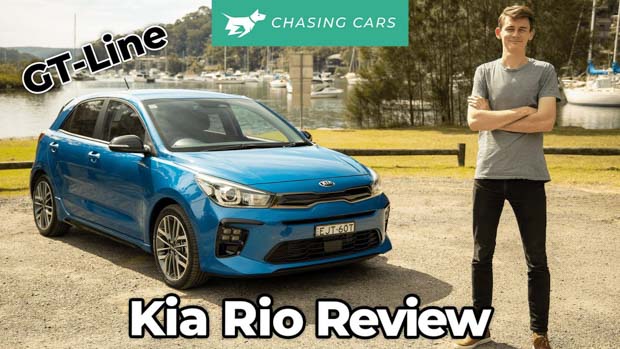
Light hatches still make plenty of sense in Australian cities – particularly when they’re as good as the 2022 Kia Rio GT-Line.
It may be the most expensive Kia Rio, but the dual clutch auto-only GT-Line ($25,990 driveaway) is also the only member of the seven-strong Rio lineup to pack a Euro-style turbo petrol engine.
Built around that willing turbocharged triple and a disciplined chassis, the Rio GT-Line is good enough to battle the sophisticated Volkswagen Polo R-Line while being about $1500 cheaper than the athletic VW when the wheels hit the road.
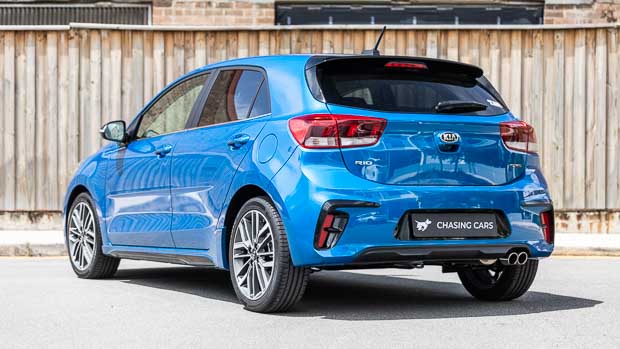
Does it really make sense to drop twenty-six grand on a Kia Rio? Well, if this light hatch were powered by the standard car’s rather asthmatic 1.4-litre naturally aspirated engine, it wouldn’t be.
But it turns out the European-influenced turbo/dual-clutch combination, in partnership with an unexpectedly engaging ride/handling balance, creates a really excellent light hatch.
The Rio GT-Line drives about as well as a tightly-damped yet supple Euro hatch but with a meaningful discount baked into the price.
It’s firm, no doubt, on account of the slightly sportier suspension and bigger 17-inch wheels that are wrapped in Continental ContiSport rubber.
Sporty Contis give away the intention here: at just 4.07m in length, the Rio GT-Line is small enough to fit into any city parking spot but it’s not just an appliance. Instead, you can have some real fun on your commute.
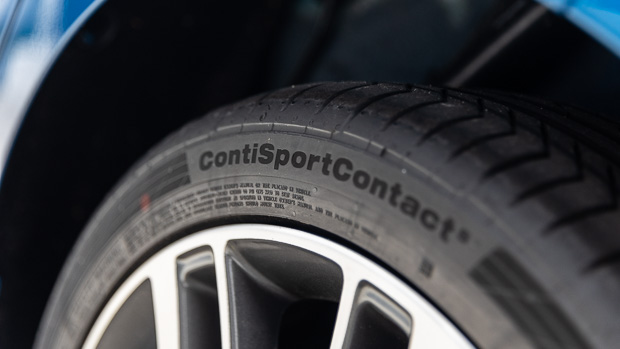
Moderately heavy but very precise steering, fed through an appreciably premium, stitched leather steering wheel means chucking the 1197kg Rio into corners is a rewarding experience.
Do so and you’ll notice that the chassis just hangs on resolutely – as do the Continentals, with remarkably little squeal as the sticky rubber supports relatively little weight.
The suspension – strut at the front, torsion beam at the rear – is pliant enough to let the body lean and pitch a little in the corners, giving you options, and soaking up mid-bend bumps effectively.
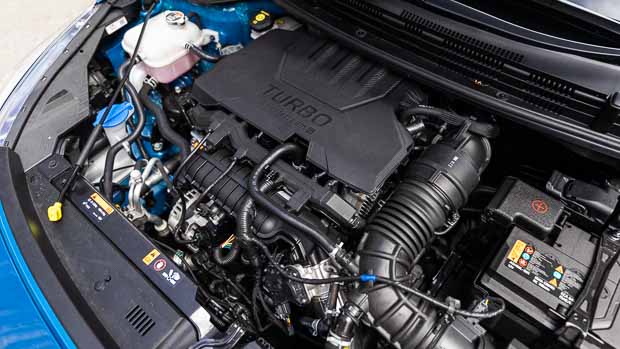
You wouldn’t call the ride luxurious, but it is pleasantly damped and supple enough for soaking up Sydney’s potholed roads.
Under the bonnet is the smaller-again Picanto GT’s 1.0-litre turbocharged three-cylinder petrol engine – but where the hot Pic’ is manual-only, the Rio GT-Line is auto-only.
That auto is a very European dry dual-clutch auto which can be a little finicky from rest but quickly falls into its stride with some speed on the board, firing off quick shifts and making the absolute most of the triple’s 74kW of power and 172Nm of torque.
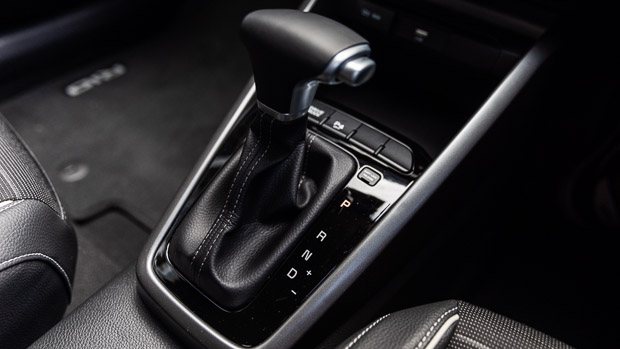
In a platform this light, those outputs are more than enough to keep the Rio GT-Line on its toes and help you jump into gaps in traffic, if that’s your style.
Like the Rio Sport that sits beneath it in the lineup, the GT-Line scores forwards autonomous emergency braking with pedestrian detection and lane keep assist.
It is worth nothing that the more expensive Toyota Yaris includes additional safety technologies, including AEB with cyclist detection, junction AEB and a centre airbag.
The Rio has a five-star ANCAP safety rating, though the assessment behind this rating – shared with the related Kia Stonic small SUV – was done in 2017.
There’s no confusing a Kia Rio for a luxury car inside, but the interior is practical, easy to understand and comfortable enough for shorter trips.
We wouldn’t want to do huge kays sitting in the GT-Line’s seats, which are just too flat in the base – our six-foot frame comes with long legs that floated way above the seat base.
The backrest is good, though, and you sit really low in the Rio, which is a great thing given how well this city car handles. It’s a genuinely sporty-feeling thing!
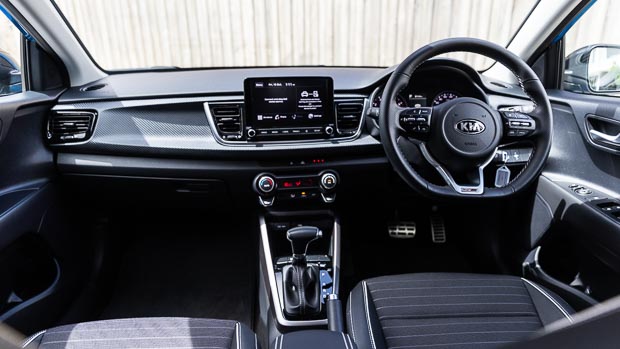
Two elements stand out in here: the lovely, small, stitched-leather steering wheel, which feels perfectly sized and premium – and the eight-inch touchscreen sitting proud atop the dashboard.
Crisp, clear, bright and offering wireless Apple CarPlay and Android Auto, the Rio’s eight-inch screen feels bang up to date and the stereo is of acceptable quality, too.
There is no integrated navigation or digital radio but with smartphone mirroring offering a plethora of entertainment and nav options this is a largely moot point, unless you lack for phone reception often.
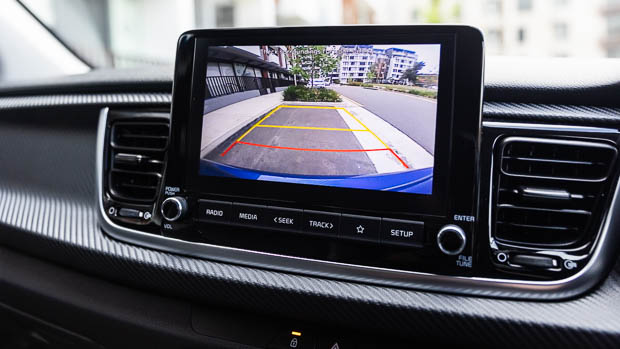
We’re not huge on the rather naff fake carbon-fibre trim running the length of the dashboard, but hey – it’s better than fingerprint-magnet piano black!
There is an armrest between the seats that slides fore and aft – again, like a little European runabout – and this helps provide adequate support while driving, while hiding some storage.
There are two cupholders between the seats and additional storage – and a USB port for powering up your phone, which is important: wireless mirroring is a real battery-hog. Above that are simple air conditioning controls.
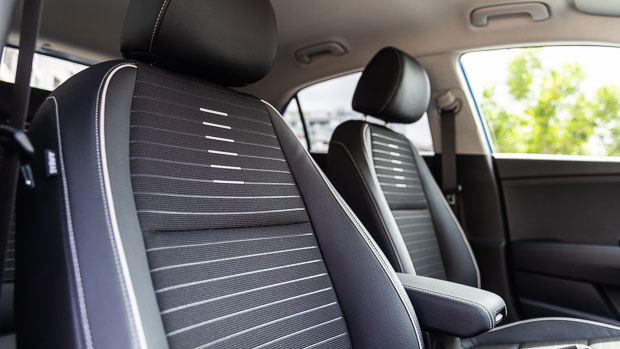
Most of the materials around the Rio’s cabin are pretty hard – soft leather wheel, shifter and faux-hide armrest aside – but it’s a fairly hardy, inexpensive car. Perceived quality isn’t as high as the Volkswagen Polo, though; too many of the Rio’s plastics seem to mark easily if brushed.
The back seats of the Rio are perfectly usable, if not perfectly comfortable. Six-footers do fit as the roofline is quite conventional and knee-room behind another adult is fine, if not generous.
Behind an easy-swing tailgate is a respectable 325-litre boot, with cargo space expanding to 980 litres if you fold down the rear seats.
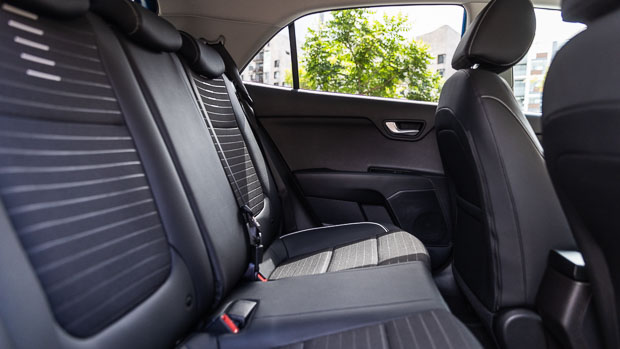
The Rio GT-Line is pretty expensive to service for a little car. Scheduled maintenance is required every 12 months/10,000km, and the first five capped-price services add up to $2128 in that time.
Contrast that to the Polo – also quite dear to service – which sees owners shell out $1850 on a five-year Care Plan that covers 75,000km of driving, while a Toyota Yaris can be serviced for 5 years/75,000km for just $1025.
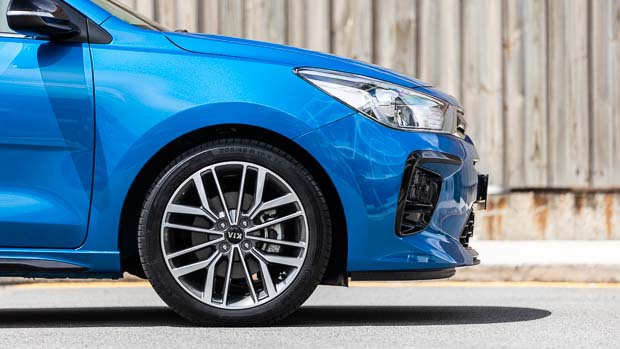
At least the warranty on the Kia is excellent – at seven years/unlimited kilometres, it bests anything else in this segment, though it is matched by the MG 3 in that regard.
Fuel consumption is really impressive: even driving the little GT-Line for sport we couldn’t get fuel use above 6.5L/100km.
Driven more modestly, you can expect to see the figure in the sub-sixes in everyday driving.
The Kia Rio GT-Line is one of our firm favourites in the city car segment. It looks good, is fun to drive, spacious enough to take friends out on the town and most of all, it’s affordable – despite the level of sophistication in the chassis.
Given it’s several thousand dollars cheaper than Kia’s own Stonic GT-Line small SUV, it may be worth giving the Rio a look-in even if you have your heart set on a taller crossover.
Variant tested GT-LINE
Key specs (as tested)
About Chasing cars
Chasing Cars reviews are 100% independent.
Because we are powered by Budget Direct Insurance, we don’t receive advertising or sales revenue from car manufacturers.
We’re truly independent – giving you Australia’s best car reviews.
The estimate provided does not take into account your personal circumstances but is intended to give a general indication of the cost of insurance, in order to obtain a complete quote, please visit www.budgetdirect.com.au. Estimate includes 15%^ online discount.
^Conditions Apply
Budget Direct Insurance arranged by Auto & General Services Pty Ltd ACN 003 617 909(AGS) AFSL 241 411, for and on behalf of the insurer, Auto & General Insurance Company Limited(ABN 42 111 586 353, AFSL 285 571).Because we don’t know your financial needs, we can’t advise you if this insurance will suit you. You should consider your needs and the Product Disclosure Statement before making a decision to buy insurance. Terms and conditions apply.
Indicative quote based on assumptions including postcode , 40 year old male with no offences, licence suspensions or claims in the last 5 years, a NCD Rating 1 and no younger drivers listed. White car, driven up to 10,000kms a year, unfinanced, with no modifications, factory options and/or non-standard accessories, private use only and garaged at night.
^Online Discounts Terms & Conditions
1. Discounts apply to the premium paid for a new Budget Direct Gold Comprehensive Car Insurance, Third Party Property Only or Third Party Property, Fire & Theft Insurance policy initiated online on or after 29 March 2017. Discounts do not apply to optional Roadside Assistance.
2. Discounts do not apply to any renewal offer of insurance.
3. Discounts only apply to the insurance portion of the premium. Discounts are applied before government charges, taxes, levies and fees, including instalment processing fees (as applicable). The full extent of discounts may therefore be impacted.
4. We reserve the right to change the offer without notice.